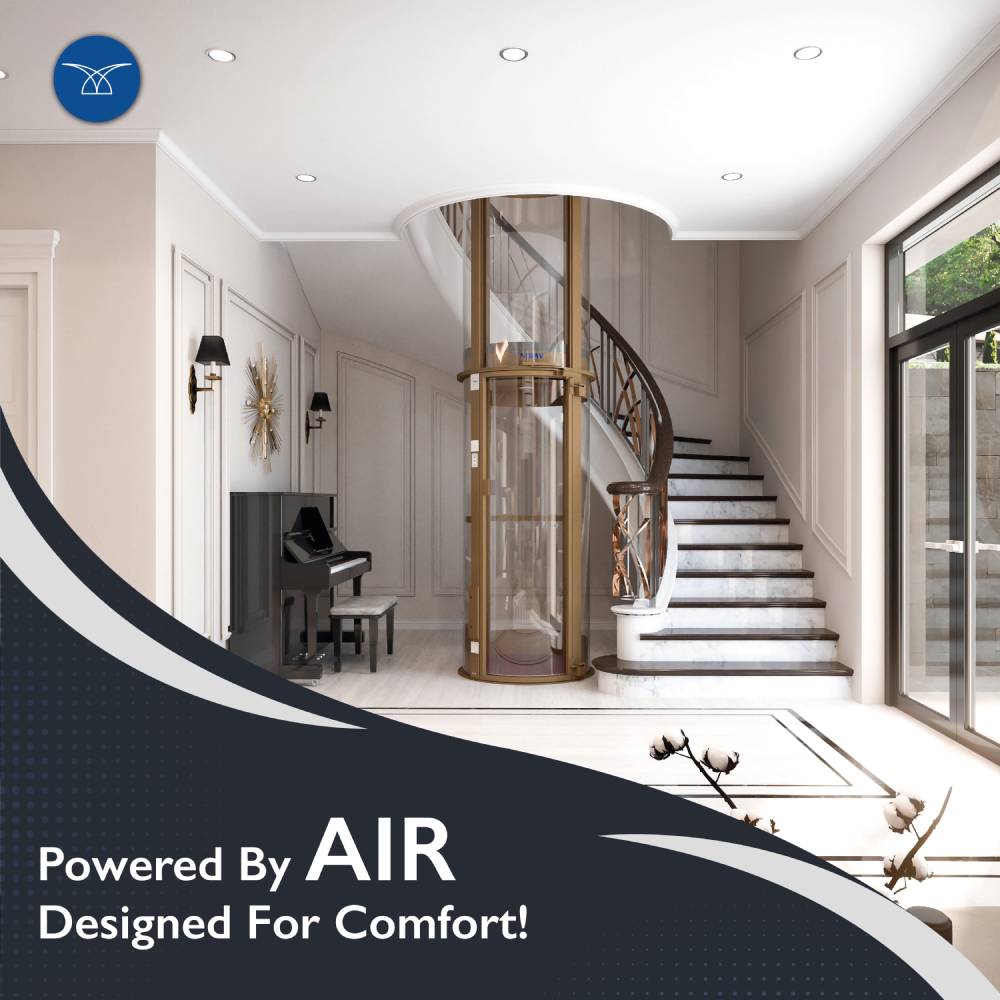How can an elevator fit inside a house?
Elevators have been a symbol of luxury and convenience in the past. However, in recent years, they have become increasingly common in homes. Home elevators provide easy and quick access to different floors in the home, making them an excellent addition for people with mobility issues. Additionally, they provide a significant level of convenience for anyone who wants to avoid the inconvenience of climbing stairs or carrying heavy items up and down the stairs.
Many people believe that installing an elevator in their home is not feasible due to various reasons such as cost, space, or structural limitations. However, with advances in technology, elevators have become more affordable and adaptable to any home. Here are some ways in which an elevator can fit in any home.

Compact and space-saving designs
One of the most significant obstacles to installing an elevator in a home is the availability of space. However, the compact and space-saving designs of modern elevators have made it easier to install them in any home. Elevators are now available in a wide range of sizes and configurations to fit into any space, whether it’s a small corner or a narrow hallway.
There are several options for homeowners to consider when it comes to the size and design of the elevator. A compact residential elevator with a smaller footprint can fit into a corner, while a narrow design can fit into a hallway or even a closet. A professional elevator installer can help determine the best design and placement of the elevator to make the most of the available space.
Check out our Nibav’s Home Elevator Measurements and Specifications:
General
| Maximum Stops | 4 Stops (G+3) |
| Max Travel Height | 13500mm |
| Rated Load/Capacity | 210 Kg |
| Travel Speed | 0.15 m/seg |
| Unit Types | Split, Integrated & Sound Proof |
| Clear Space Required | 1010mm |
| Power Consumption | 3.7 Kva (Stabilised Power) |
| Electrical Requirement | 230V, 60/50 Hz, 22 amp single phase power |
Internal Specifications:
| Internal cabin height | 2000mm |
| Internal cabin diameter | 853mm |
| Type of control | Push and Run |
| Power Supply inside cabin | 24Volt DC |
| Cabin Operating Panel Type | Single collective with illuminated buttons |
| Overload Indication | Built In on COP (Cabin Operating Panel) |
| Cabin Ceiling | LED Spot Light with Fan |
External Specifications:
| External cylinder diameter | 970mm |
| Shaft Construction | Composition of Aluminium & Galvanized Steel |
| Special Glass | Polycarbonate (250 times stronger than glass) |
| Minimum overhead clearance | Integrated: 2656mm | Split: 2639 mm | Sound Proof: 2800mm |
| Landing door height | 2000mm |
| Clear door access | 600mm |
Flexible installation options
Homeowners can choose from different installation options for elevators. Depending on the design and layout of the home, an elevator can be installed in various locations such as the center of the house, outside the home, or even on the exterior wall of the house. There are also options for hydraulic or traction elevators, which can be installed based on the available space and budget.
Cost-effective options
In the past, elevators were considered a luxury item and were only found in high-end homes. However, with advancements in technology and increased demand, elevators have become more affordable, making them accessible to many homeowners. There are several cost-effective options available, including pre-fabricated elevators and retrofitting existing homes with elevators.
Prefabricated elevators come in different sizes and designs. These measurements of an elevator are strictly followed and constructed in a factory before being delivered to the home. These elevators are cost-effective, easy to install, and require minimal structural modifications to the home. Retrofitting an existing home with an elevator can be more expensive, but it can be a good investment in the long run, especially for people planning to age in place.
Accessible for people with disabilities
For people with mobility issues, installing an elevator in their home can provide them with the freedom to move around the house independently. Elevators can also increase the value of the home, making it an excellent investment for people planning to sell their home in the future. Additionally, elevators can improve the quality of life for elderly parents, children, or other family members who have difficulty climbing stairs.
Enhanced home security
Elevators can provide an additional layer of home security. By installing an elevator, homeowners can control who enters their homes by limiting access to the elevator with a security code or key. Additionally, elevators can provide a safe and secure way to transport valuable items, such as artwork or furniture, from one floor to another without the risk of damage or injury.
Conclusion
NIBAV Lifts have earned the prestigious title of being the World’s Safest Elevator Brand. With our completely knocked-down structure, these elevators are easy to install and dismantle and require no pit or machine room! Owing to their compact structure, these lifts take up no more than 3 feet of space and can be installed in newly constructed houses as well as retrofitted into existing homes.

